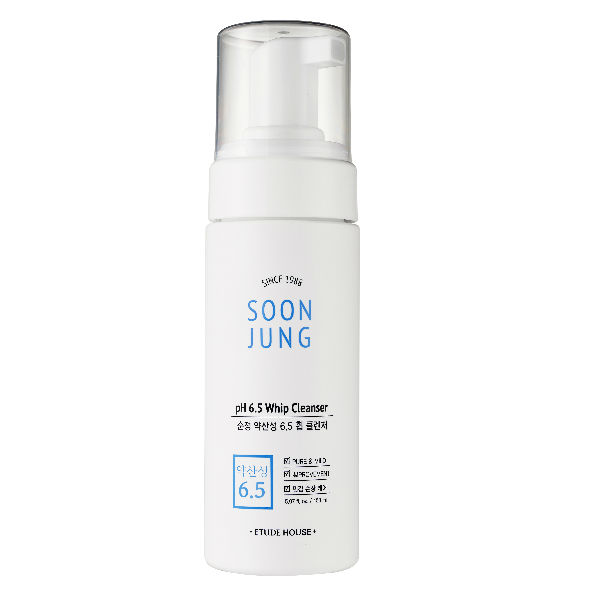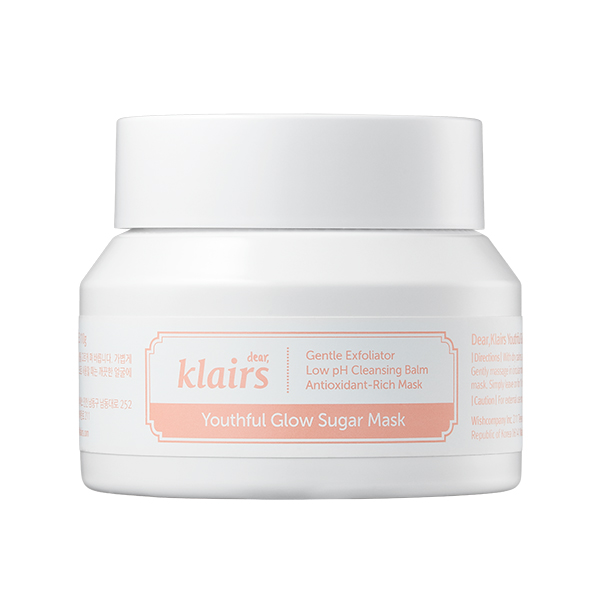Tired of uneven skin tone and texture? Try out this 10 step routine for smooth skin texture.
The path to smooth, glowing skin can often seem impossible when uneven skin tone, annoying blemishes, or fine lines and wrinkles can steer you away from your intended skin care goals. It’s important to realize that skin texture issues can occur for a number of reasons—from using products that aren’t suited for your skin type to ones that are simply not moisturizing enough.
In order to target skin texture you should obviously use products suited for your skin type, but also have a routine that effectively hydrates and exfoliates your skin on a regular basis.
Here’s a simple 10 step routine to get you started:
Oil Cleanser: Hanskin Cleansing Oil & Blackhead [PHA]
Oil cleansers are integral in smoothing skin texture—they help to dissolve excess sebum and impurities while efficiently removing makeup, keeping your skin clean and debris-free.
The Hanskin Cleansing Oil & Blackhead [PHA] is ideal for combating skin texture since it includes PHA’s, AKA polyhydroxy acids. It’s a gentle acid suitable for sensitive skin types that lightly exfoliates to help keep blackheads and dead skin cells at bay. It also contains tea tree leaf oil to help fight breakouts, while jojoba, olive and grapeseed oils, along with aloe vera extract, hydrate the skin.
Make sure to oil cleanse on a regular basis as this will help to keep your skin clean making it less prone to blemishes which will help to make your skin appear smoother and texture-free.
Water-Based Cleanser: Etude House SoonJung pH 6.5 Whip Cleanser
It’s important to follow up your oil cleanser with a water-based cleanser so that you can make sure your skin is as clean (but still hydrated!) as possible. Since this routine is going to be heavily based on exfoliating the skin, it’s important to use a soothing cleanser that will not only help to cleanse but also calm the skin.
The Etude House SoonJung pH 6.5 Whip Cleanser has a low pH of 6.5 and is formulated with 98.9% naturally-derived ingredients, making it the perfect candidate for the job. The formula also features panthenol and madecassoside (a form of centella asiatica) to condition and calm skin.
Toner: The Plant Base Pore N Turn-Over 28 ABA Toner
Toning the skin is important because it helps to swipe away any leftover impurities post-cleansing while also pH balancing the skin. This one contains AHAs and BHAs to gently remove dead skin cells and buildup, in addition to soothing herb extracts and pore-minimizing ingredients. The result is a smooth and even canvas that’s prepped and ready for the rest of your routine.
Essence: Dewytree Ultra Vitalizing Snail Essence Water
Essences are an important step in your routine because they provide a concentrated layer of hydration and help skin absorb more moisture in the steps that follow.
This essence goes a step further. It’s packed with nourishing ingredients like snail mucin, adenosine, and aloe leaf extract so it targets redness, irritation, wrinkles, and even acne. The fact that the formula also plumps and hydrates is just icing on the cake.
Exfoliator: Klairs Youthful Glow Sugar Mask + Benton PHA Peeling Gel
Chemical exfoliators may be all the rage right now, but don’t totally discount physical scrubs. This one is formulated with fine sugar granules and moisturizing ingredients like jojoba and raspberry seed oils so it’s not abrasive. It also contains brightening grapefruit extract and soothing calamine. After use, skin looks glowy and feels baby soft.
If your skin is feeling extra clogged and textured, use the Benton PHA Peeling Gel at night and you’ll feel the difference of smoother, brighter skin. This powerful but gentle cream actually contains PHA’s to treat clogged pores, dissolve excess sebum and dead skin cells, and brighten dark spots all at the same time. It also contains nourishing sodium hyaluronic acid to strengthen your skin’s natural barrier.
Serum: Klairs Rich Moist Soothing Serum
While all the exfoliators mentioned above are on the gentle side, any form of exfoliation can cause skin sensitivities, so it’s great to follow up with a calming serum that replenishes any stripped moisture or natural oils.
The Klairs Rich Moist Soothing Serum contains nutrient-rich ingredients like celery, carrot root, and broccoli extract, in addition to calming ingredients like centella asiatica that sink right into skin and target dry patches and inflammation.
Eye Cream: Erborian Seve de Bamboo Eye Matte
If you’re prone to getting texture in the eye area, you’ll want to choose a lightweight eye cream like the Erborian Seve de Bamboo Eye Matte. Its soothing gel formula will nourish the sensitive skin around your eyes without clogging pores. This eye cream is formulated with moisture-rich birch sap as well as bamboo fiber which will hydrate and brighten tired eyes.
Sheet Mask: Klavuu White Pearlsation Pearl Serum Mask
Sheet masks are definitely optional but you’ll want them in your routine if you’re going to be using chemical exfoliants on a regular basis since they help to deeply nourish and revitalize skin. It’s also good to remember that keeping your skin hydrated is another way to help to reduce the appearance of uneven skin texture.
To really brighten and hydrate, try using the Klavuu White Pearlsation Pearl Serum Mask. This sheet mask force feeds your skin barrier necessary nutrients. It helps to brighten the skin with niacinamide, which helps to reduce pore size and target pigmentation.
Moisturizer: Enature Squeeze Green Watery Gel Cream
If you’re experiencing uneven skin texture, another reason could be your moisturizer. I find this to be especially true because although I have dry skin, if I use too rich a moisturizer my skin tends to become clogged and rough. This can easily be remedied by using one that is moisturizing but lightweight.
The Enature Squeeze Green Watery Gel Cream is lightweight, yet because it’s infused with avocado oil capsules, your skin will be sufficiently moisturized.
SPF: Neogen Day-Light Protection Airy Sunscreen
Lack of sun protection is also a huge reason you could be experiencing skin texture issues since extended exposure to UV rays can cause your skin to become rough over time, as well as increase the signs of aging. This can lead to increased fine lines, wrinkles, and potentially sun spots and other pigmentation.
Using SPF everyday is essential to protecting your skin from environmental stress as well as keeping it youthful longer. If you shy away from sunscreens because of their greasy texture or unfortunate white cast, try the Neogen Day-Light Protection Sunscreen. The refreshing gel texture absorbs quickly and hydrates your skin while peony and mint extract soothes it.
There are tons of sunscreen options on the market so there’s no excuse to skip the SPF!
Bottom line:
Uneven skin texture can be annoying and hard to deal with, but with the right routine you can work to get it under control. If there’s anything you can take away from this extensive routine, let it be that moisturizing, exfoliating and regular use of SPF are essential to any routine but they are especially important for maintaining smooth, texture-free skin.

















